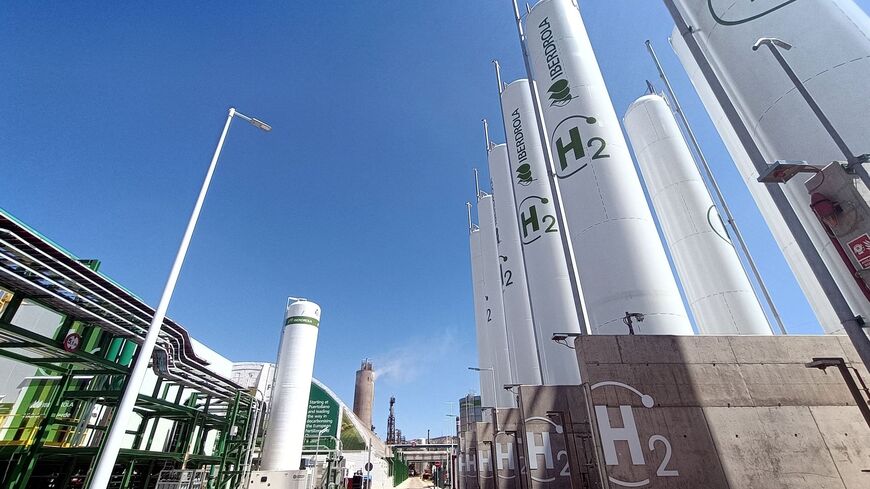Read in
Moroccan state-owned phosphates and fertilizer company OCP plans to invest $7 billion in a new ammonia plant using green hydrogen produced from renewable fuel, and experts say the project will be crucial in helping the North African country achieve agricultural self-sufficiency.
Ammonia has many uses: It helps to make fertilizers, plastics, pharmaceuticals and even explosives.
OCP is a major player in the ammonia market and uses the compound to make fertilizers. The state-run company is one of the world’s largest importers of ammonia, spending $2 billion on it last year after the Russian invasion of Ukraine increased global prices, which have since settled as the market stabilized.
Ammonia is a key ingredient in nitrate fertilizers, and before the war against Ukraine began, a quarter of the world’s nitrate fertilizers were imported from Russia. For example, the Togliatti-Odesa pipeline that is used by Russia but goes through Ukraine once pumped up to 2.5 million tons of ammonia annually — but it has laid idle since the war began in February 2022. Last month, Russia accused Ukraine of blowing up part of the pipeline — the world’s longest that carries ammonia.
After the invasion and when Russia was slapped with international sanctions, OCP had to look for alternative sources for fertilizer compounds. It struck a deal to buy ammonia from North America this year to offset supply problems.
The $7 billion investment in the planned ammonia plant, which Reuters reported on in June, is part of Morocco’s strategy to reduce its reliance on fertilizer and energy imports. The facility is being built in Tarfaya in southern Morocco to increase the domestic supply of ammonia but also to export it to other countries.
The plant will produce 200,000 tonnes of ammonia a year by 2026, increasing to 1 million tonnes by 2027 and 3 million tonnes by 2032, Reuters reported last month. It will allow OCP to achieve greater production efficiency at low carbon emissions.
Asked about the project, Robin Mills, chief executive officer of Qamar Energy, told Al-Monitor, “This is a large and important project for Morocco, given the importance of its existing fertilizer industry and its potential to become a major exporter of green hydrogen and ammonia.”
“It’s not really a factor for Morocco’s low-carbon targets but more important for supporting decarbonization in other countries,” he added.
Mills said financing for the project will likely have offtake agreements — prearranged between a producer and buyer to purchase portions of the ammonia made at the plant — for low-carbon ammonia that will support project financing.
Mills does not believe the war against Ukraine triggered the establishment of this plant, as there has been a growing interest in low-carbon ammonia since 2020-2021.
“[Ammonia] prices are pretty much back to where they were pre-war. But there is more attention on supply security and diversification now,” Mills said.
‘Forward thinking’
Mills believes that OCP will export most of the ammonia it produces at the plant, as it is the company’s business model and production will exceed domestic demand.
Green energy analyst Gniewomir Flis described the project as “forward thinking” and covering multiple bases.
“By bringing ammonia production in-house, OCP is integrating vertically, which allows it to retain higher value add while strengthening independence,” he told Al-Monitor. “At the same time, pursuing renewable ammonia future-proofs OCP’s business from carbon regulation and taxes. Should a green premium emerge for exports to Europe, for instance, OCP will also be perfectly positioned to capitalize on it.”
He said such a sizeable project would open the door for affiliated renewable energy initiatives in the fields of green hydrogen, for example.
“That will lead to local jobs and local capacity building, which means that building the next renewable projects, whether for another fertilizer or industrial plant, is going to be cheaper and there will be a supply chain in place,” Flis said.
“So, while directly this project does not really affect Morocco’s climate goals and ambitions, it does indirectly through capacity building. This is a climate win-win,” he added.
The project is part of OCP Group’s new strategic program of around $13 billion in investment between 2023-2027 devoted to raising fertilizer production while investing in green fertilizers and renewables. OCP first announced the initiative last December.
OCP could not be reached for further comment on the green hydrogen ammonia project.



